
Overview
Cattle ranching and farming is an industry dedicated to the rearing and production of cattle for various purposes. It involves the breeding, raising, and management of cattle, typically for meat, dairy, or by-products like leather. Cattle ranchers and farmers engage in activities such as grazing, feeding, and healthcare of the animals. They may also be involved in selective breeding to improve genetic traits, as well as marketing.
GAO’s RFID, BLE, IoT, and drone technologies have helped its customers in the cattle ranching and farming industry to improve their work processes, their operations and productivity by better management of their staff, materials and operational equipment such as water tanks, livestock trailers, head gates, manure spreaders, troughs, and cattle chutes.
Ranked as a top 10 global RFID supplier and based in New York City and Toronto, GAO RFID Inc offers a wide choice of RFID (radio frequency identification) readers and tags at ultra-high frequency (UHF), high frequency (HF, including NFC) and low frequency (LF), BLE (Low Energy Bluetooth) gateways and beacons, and various RFID and BLE systems such as people tracking, asset tracking, access control, parking control, fleet management, WIP (work in progress), traceability. Such RFID and BLE products and systems, together with its IoT and drone technologies, have been widely used in the cattle ranching and farming industry.
Applications & Benefits of GAO’s RFID, BLE, IoT & Drones for the Cattle Ranching and Farming
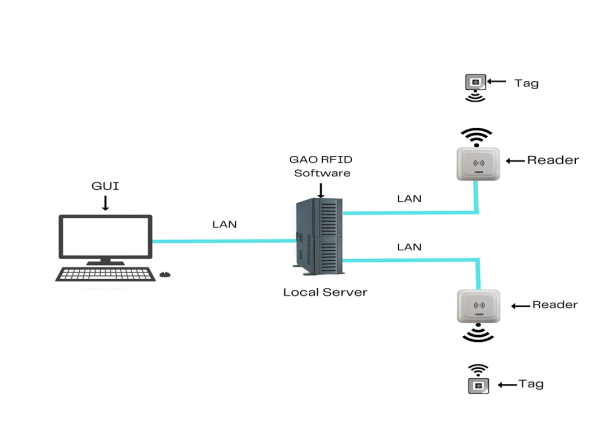
To satisfy its customers, GAO’s RFID or RFID Systems for the Cattle ranching and farming are offered in 2 versions. One version is that its software is running on a local server, and another version is that its software runs in the cloud. The above illustrates the GAO system for the cattle ranching and farming with its software running on a local server.
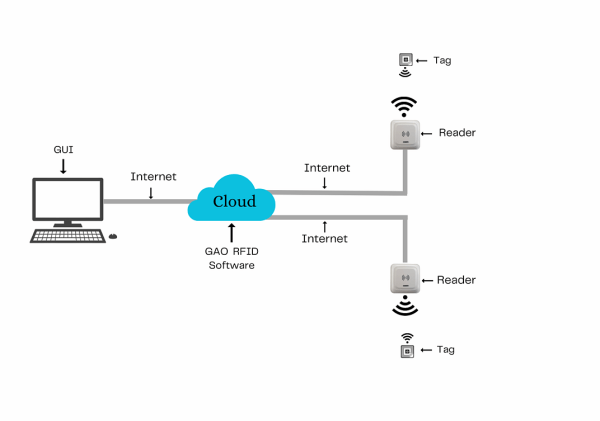
The above illustrates the GAO system for the cattle ranching and farming with its software running in the cloud.
GAO’s RFID technologies bring the many benefits to the cattle ranching and farming industry:
- Disease Management: GAO’s RFID tags can be linked to a centralized database that contains essential information about an animal’s health status and medical history.
- Breeding and Genetic Management: GAO’s RFID technology can be integrated with genetic databases to monitor and manage animal breeding programs effectively.
- Livestock Identification: GAO’s RFID tags can be used to uniquely identify individual animals. Each tag contains a unique identification number, which helps in tracking and managing specific animals.
GAO’s BLE technologies offer longer reading range and particularly attractive for applications with larger workspaces within the cattle ranching and farming industry:
- Disease Control: GAO’s BLE tags can aid in the early detection of diseases or abnormal health conditions in individual animals.
- Grazing Management: GAO’s BLE technology can assist with grazing management. By using GPS capabilities, ranchers can set boundaries for animals’ grazing areas and receive alerts if they stray too far.
- Heat Detection and Reproduction: GAO’s BLE-enabled devices, such as ultrasound machine and oestrus detector, can detect and monitor an animal’s reproductive cycle. By tracking behavioural changes and physical indicators, farmers can accurately determine the period for breeding and insemination.
GAO’s RFID and drone technologies are often combined, and such solutions offer the following benefits to the cattle ranching and farming industry:
- Precision Agriculture: GAO’s RFID and drone technologies can collect data on soil quality, moisture levels, and crop growth by scanning RFID-tagged sensors placed throughout the fields.
- Asset Protection: GAO’s RFID and drone technologies can help deter theft and locate stolen or lost assets. By regularly scanning the premises, including equipment, such as feed mixers, water tanks and head gates, vehicles, such as tractors and sprinkling trucks.
- Inventory Management: By integrating GAO’s RFID and drone technologies, ranchers and farmers can automate inventory management. This simplifies tracking stock levels, ensuring accurate records, and streamlining supply chain operations.
Here are benefits of GAO’s IoT technologies to the cattle ranching and farming industry:
- Biosecurity: GAO’s IoT technologies aid in disease prevention and early detection. Sensors can monitor livestock movements and interactions, flagging any abnormal behaviour that could indicate the presence of disease.
- Animal welfare: GAO’s IoT devices enable farmers to create optimal living conditions for their livestock. Connected sensors can monitor factors such as temperature, humidity, and air quality, ensuring that animals are comfortable and healthy.
- Productivity and profitability: GAO’s IoT in farming leads to increased productivity and profitability. By optimizing operations, minimizing losses, and improving resource management, farmers can achieve higher crop yields, healthier livestock, and reduced operational costs.
GAO Helps Customers Comply with Standards, Mandates & Regulations of the Cattle Ranching and Farming
GAO RFID Inc. has helped many companies in the cattle ranching and farming to deploy RFID, BLE, IoT and drone systems and to ensure such deployments complying with the applicable industry standards, mandates and government regulations:
RFID, BLE, IoT, & Drone Standards & Mandates
- Sigfox: Sigfox is a global network dedicated to IoT devices. It provides low-power, long-range connectivity and is suitable for applications like asset tracking, soil monitoring, and livestock management.
- MQTT (Message Queuing Telemetry Transport): It is commonly used for data transmission in smart farming applications, including livestock controlling and environmental sensing.
- LoRaWAN (Long Range Wide Area Network): It is suitable for tracking livestock, weather conditions, and soil moisture levels.
- OGC SensorThings API: It is used in precision agriculture and livestock monitoring to collect and share real-time data from sensors and IoT devices, such as smart fire alarms and smart door locks.
- USDA-ADT: This standard is specifically designed for livestock identification and traceability within the United States.
- NAIS (National Animal Identification System): The NAIS is an animal identification program implemented by the United States government to enhance disease control and traceability.
- ICAR (International Committee for Animal Recording): They provide recommendations for RFID technology in livestock management and work closely with other standards organizations.
- CCA (Cattle Council Association): It provides guidelines for the use of RFID technology in cattle farming, focusing on traceability and disease management.
US. Government Regulations
- Animal Welfare Act (AWA): The AWA is a federal law that sets standards for the humane treatment of animals in research, exhibition, and transport.
- Federal Meat Inspection Act (FMIA): It mandates inspection of livestock and meat products intended for interstate commerce to ensure their safety and proper handling.
- Conservation Reserve Program (CRP): It offers financial incentives to agricultural producers to convert environmentally sensitive land to conservation practices, such as grasslands for grazing.
- National Veterinary Accreditation Program (NVAP): It provides accreditation to veterinarians who are involved in disease monitoring, surveillance, and regulatory activities related to animal health.
- National Organic Program (NOP): It establishes standards for the production, handling, and labelling of organic agricultural products, including organic livestock production.
- Food Safety Modernization Act (FSMA): It includes regulations that impact cattle ranching and farming, particularly in the areas of produce safety, preventive controls, and risk-based approaches to food safety.
- Environmental Protection Agency (EPA): The EPA regulates various aspects of environmental protection that can affect cattle ranching and farming, such as water quality, pesticide use, and air emissions from livestock operations.
- S. Customs and Border Protection (CBP): CBP oversees import and export requirements for dairy products and meat (beef) across the country. These regulations encompass documentation required for the trade of cattle ranching and farming industry.
Canadian Government Regulations
- Canadian Environmental Protection Act (CEPA): CEPA regulates the use of certain substances, such as pesticides, herbicides, and genetically modified organisms (GMOs), to protect human health and the environment.
- Canadian Cattle Identification Program (CCIP): It includes regulations for the use of approved identification tags or devices and the recording of animal movements in a centralized database.
- Feeds Regulations: Administered by the Canadian Food Inspection Agency (CFIA), these regulations cover labelling requirements, feed composition, and the prevention of contamination.
- Canadian Cattle Ranching Programme (CCRP): Cattle farmers are required to participate in the CCRP, which involves the identification and traceability of individual animals through the use of approved ear tags.
- Trade and Export Regulations: The Canadian government sets regulations for the export and import of beef and cattle. These regulations ensure compliance with international trade agreements.
- Environmental Regulations: Environmental regulations may vary by province or territory. They govern aspects such as land use, water management, waste management, and the application of fertilizers and pesticides.
- Consumer Product Safety Commission (CPSC): This sets safety standards and requirements for producer and consumer products, such as milk, meat, and other dairy products. It aims to protect consumers against unreasonable risks of injury or death associated with the use of these products.
- Canada Labour Code: This code covers occupational health and safety regulations applicable to federal jurisdiction workplaces, including those in the cattle farming industry.

Canadian Cattle Identification Agency

Canadian Cattle Learning
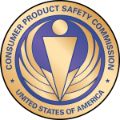
Consumer Product Safety Commission
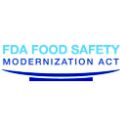
Food Safety Modernization Act
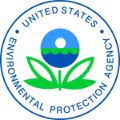
Environmental Protection Agency
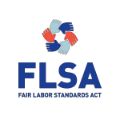
Fair Labor Standards Act

Canada Labour Code
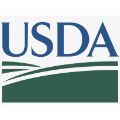
Conservation Reserve Program

Canada Consumer Product Safety Act

U.S. Customs and Border Protection (CBP)
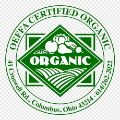
National Organic Program

Department of Labor Laws
GAO’s Software Provides API
GAO’s RFID and BLE software offers a free trial for both the server-based and cloud versions, and offers an API to the important systems in the cattle ranching and farming such as:
Personal management
- Employee scheduling and shift management
- Performance evaluation
- Training programs for employees
Equipment management
- Repair and servicing history tracking
- Tools inspection
- Equipment tracking, such as rakes and balers
Access control
- Surveillance systems
- Visitor management system
- Biometric system
Warehouse management
- Order fulfillment
- Temperature and humidity control
- Barcode inventory control
Supply chain management
- Logistics management for transportation
- Procurement processes
- Integration with suppliers
Other applications
- Financial management and accounting software
- Crop management systems
- performance analysis
GAO has enabled its customers to make use of some of the leading software and cloud services in the furniture and related product manufacturing industry. Below are some of the popular software and cloud services in the cattle ranching and farming industry:
- FarmERP: Has a software designed for the agriculture industry. It includes personnel management features such as workforce planning, task assignment, and performance tracking.
- Climate FieldView: It allows us to manage and assign tasks to our team, track labour activities, and monitor work progress.
- AgriWebb: AgriWebb is a cloud-based farm management software designed specifically for livestock and cattle operations.
- Granular: Provides farm management software that helps with personnel management by allowing us to assign tasks, track labour hours, and manage employee records.
- FarmLogs: FarmLogs offers a comprehensive farm management platform that includes personnel management features such as employee scheduling, task assignment, and labour tracking.
- SAP Agricultural Contract Management: It enables us to monitor access to facilities, track inventory in warehouses, and optimize supply chain operations for improved efficiency.
- Oracle NetSuite: It provides capabilities to control user access and permissions, manage warehouse operations, track inventory, and streamline supply chain processes.
- QuickBooks Enterprise: QuickBooks Enterprise is a comprehensive business management software that can be utilized for access control, warehouse management, and supply chain management.
- Trimble Ag Software: Offers a range of farm management solutions, including personnel. With this software, we can track employee activities, manage work schedules, and monitor labour costs.
- Fishbowl Inventory: This inventory provides tools for user access management, inventory tracking, order management, and integrates with various e-commerce and accounting platforms.
- Manhattan Associates: It includes features such as access control, inventory tracking, order management, and labour management to streamline operations in the cattle ranching and farming industry.
- IBM Cloud: The platform also offers data storage and analytics services, such as IBM Cloud Object Storage and IBM Db2, which can be utilized for personnel and farming data management.
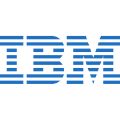
IBM Cloud

Climate FieldView
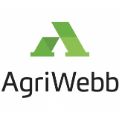
AgriWebb

Granular Incorporated
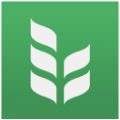
FarmLogs Incorporated

SAP Agricultural Contract Management
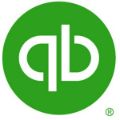
QuickBooks Enterprise

Trimble Ag software

Oracle Netsuite
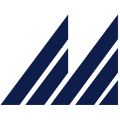
Manhattan Associates
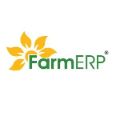
FarmERP Limited

Fishbowl Inventory
GAO has worked with some of the leading technology companies in the castle ranching and farming to provide integrated RFID, BLE, IoT and drone solutions to customers. Here are some of the technology leaders in the cattle ranching and farming industry:
- Climate Corporation: Provides digital agriculture solutions, including weather monitoring, field data analytics, and predictive modelling, to help farmers optimize their operations.
- CattleMax: Provides cattle management software that assists with herd record keeping, performance tracking, and genetic analysis.
- Allflex: Offers livestock identification and monitoring solutions, including electronic ear tags and remote monitoring systems for animal health and tracking.
- Cainthus: Offers computer vision and AI-based solutions for livestock monitoring and management. Their technology uses cameras and sensors to analyse animal behaviour, health, and performance.
- Lely: Provides electronic solutions for dairy farming, including automated milking systems, robotic feeders, and data management software.
- Ritchie Agricultural: Offers electronic livestock waterers, including automatic waterers and water management systems.
- Tru-Test Group: Provides electronic weighing and EID (Electronic Identification) systems for livestock management, including weigh scales and data management software.
- AgriNomix: Specializes in greenhouse automation systems for horticulture, providing solutions for controlled environment agriculture, irrigation, and climate control.
- GEA Group: Provides integrated systems for dairy farming, including milking equipment, barn automation, feeding systems, and farm management software.
- DeLaval: Offers a wide range of dairy farming solutions, including milking systems, cooling tanks, cow comfort systems, and herd management software.
- BouMatic: Specializes in milking equipment and systems, including automated milking parlours, milk cooling and storage solutions, and herd management software.
- Valley Agricultural Software (VAS) Incorporated: Offers farm management software tailored for dairy operations, including milk production tracking, animal health management, and financial analysis.
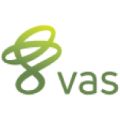
Valley Agricultural Software, Incorporated

Boumatic Limited Liability Company

DeLaval Limited
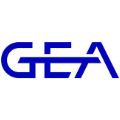
GEA Group

AgriNomix Limited Liability Company
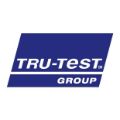
Tru-Test Group
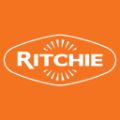
Ritchie Agricultural Company
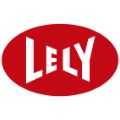
Lely Industries

Cainthus Agribusiness Corporation
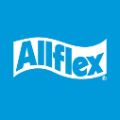
Allflex Corporation
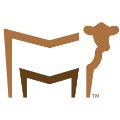
CattleMax Incorporated

Climate Corporation
Case Studies of RFID Applications
Below are some RFID application cases in the cattle ranching and farming industry:
Cargill, a global agricultural company, implemented RFID tags as part of their cattle ranching operations. These RFID tags were utilized to track and manage the movement and health of individual cattle. By using RFID technology, Cargill enhanced supply chain visibility, enabling them to have real-time insights into the location and condition of the cattle throughout the supply chain. This improved traceability and allowed for more effective management of the animals’ well-being. RFID tags facilitated accurate data collection and monitoring, contributing to Cargill’s commitment to ensuring high standards of animal welfare and optimizing their supply chain operations in the cattle ranching industry.
Gallagher USA is a provider of comprehensive livestock management solutions, including RFID technology. Their offerings encompass a wide range of tools and systems designed to streamline operations in the cattle ranching industry. Gallagher’s RFID technology plays a crucial role in efficient cattle tracking, enabling ranchers to monitor the movement and location of individual animals. This facilitates better herd management, ensuring accurate data collection and record-keeping. Additionally, Gallagher’s RFID solutions assist in inventory management by providing real-time information on herd size and composition. By leveraging RFID technology, Gallagher USA contributes to operational streamlining and improved productivity in the cattle ranching sector.
Zee Tags is a livestock identification solutions company that specializes in offering UHF RFID tags and readers for the cattle ranching industry. They prioritize providing reliable and durable UHF RFID solutions to enable accurate animal identification and tracking. Zee Tags’ UHF RFID tags are designed to withstand the rugged conditions of the livestock environment while maintaining readability. Their UHF RFID readers ensure seamless data capture and enable efficient tracking throughout the supply chain. By implementing Zee Tags’ UHF RFID solutions, cattle ranchers can achieve enhanced traceability, improved inventory management, and more precise monitoring of animal movement and health.
Y-Tex Corporation is a company that specializes in providing livestock identification and management solutions, with a focus on UHF RFID technology. They offer UHF RFID tags and readers specifically designed for the cattle industry. These tags and readers enable efficient tracking of individual cattle, ensuring accurate and reliable identification throughout the supply chain. The UHF RFID technology from Y-Tex facilitates streamlined inventory management by providing real-time information on herd size and composition. Additionally, it supports health monitoring initiatives by enabling the collection of data related to animal health and well-being. Y-Tex’s UHF RFID solutions contribute to improved operational efficiency and effective livestock management in the cattle industry.
Many applications of RFID by GAO can be found here:
GAO RFID Systems & Hardware for the Cattle Ranching and Farming
GAO RFID Inc. offers the largest selection of BLE gateways, BLE beacons, RFID readers, tags, antenna, printers, and integrated RFID systems for various industries, including the cattle ranching and farming:
BLE (Bluetooth Low Energy)
GAO offers advanced BLE gateways:
as well as versatile beacons with such important functions as temperature, humility, vibration and panic button:
GAO’s BLE technology is suitable for many industries, including the cattle ranching and farming.
UHF (Ultra High Frequency) RFID
GAO offers the largest selection of UHF RFID readers for various industries, including the cattle ranching and farming:
GAO RFID offers the widest choice of UHF RFID tags, labels, badges, wristbands for various industries, including the cattle ranching and farming:
and an array of antennas to address different applications:
HF (High Frequency), NFC (Near Field Communications) and LF (Low Frequency) RFID
GAO offers the largest selection of HF, NFC, and LF RFID readers for various industries, including the cattle ranching and farming:
and antennas:
GAO also offers RFID printers:
Digital I/O adapters:
and relay controllers:
For embedded applications, GAO offers UHF, HF and LF RFID reader modules:
- UHF 860 – 960 MHz RFID Modules
- UHF 860-960 MHz RFID Modules – GAO RFID Inc.
- 125 kHz Low Frequency RFID Modules
The RFID systems by GAO are highly popular for clients in the cattle ranching and farming:
Physical asset or operational equipment tracking system:
Assets that can be effectively tracked using GAO’s technologies include:
- Milking Machines: Used in dairy farming to automate the milking process, increasing efficiency and hygiene.
- Irrigation Systems: Equipment like sprinklers, drip lines, or center pivot systems used to supply water to crops.
- Tractors: Used for a variety of tasks, including ploughing, planting, harvesting, and hauling heavy loads.
- Livestock Trailers: Designed to transport cattle or other livestock safely from one location to another.
- Manure Spreaders: Implements used to distribute animal waste (manure) evenly on fields as a natural fertilizer.
- Sprayers: Used to apply fertilizers, herbicides, or pesticides to crops to promote growth and control pests.
People or workers tracking system:
Personnel or people access control system:
Parking or vehicle control system:
GAO Has Served the Cattle Ranching and Farming Extensively
GAO’s products and technologies have helped its customers in the cattle ranching and farming industry to achieve success in artificial insemination, upcycling, agri-economics, artificial intelligence, 3D printing, augmented reality (AR) and virtual reality (VR), organic farming, grass-fed beef, genetic improvement, vertical farming, and climate-smart agriculture.
GAO RFID Inc. has deployed RFID, BLE and IoT projects for many companies in the cattle ranching and farming, including many in its various divisions such as:
- Beef Cattle Ranching: Beef cattle ranching involves raising cattle specifically for meat production.
- Dairy Farming: Dairy farming involves raising cattle primarily for milk production.
- Feedlot Operations: Feedlots are facilities where cattle are fed a high-energy diet to promote rapid weight gain before being sent to slaughter.
- Organic and Sustainable Farming: It involves raising cattle without the use of synthetic hormones, antibiotics, or genetically modified feed and emphasizes environmentally friendly practices.
- Seedstock Production: These cattle serve as the foundation stock for commercial cattle producers, providing superior genetics for improved meat or milk production.
- Pasture and Forage Management: This division focuses on the cultivation and management of pastures and forage crops for cattle grazing.
Here are some of the leading companies in the cattle ranching and farming industry:

JBS USA Holdings, Incorporated

Tyson Foods, Incorporated
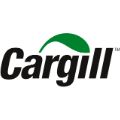
Cargill, Incorporated
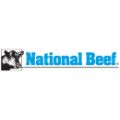
National Beef Packing Company Limited Liability Company
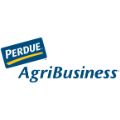
Perdue Farms, Incorporated

Smithfield Foods, Incorporated

Cactus Feeders, Incorporated
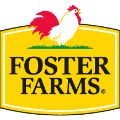
Foster Farms
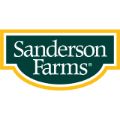
Sanderson Farms, Incorporated
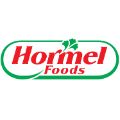
Hormel Foods Corporation
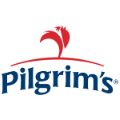
Pilgrim’s Pride Corporation
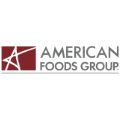
American Foods Group, Limited Liability Company
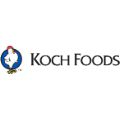
Koch Foods, Incorporated

Simplot Livestock Company
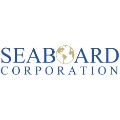
Seaboard Corporation

Iowa Select Farms
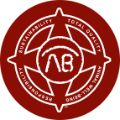
Agri Beef Corporation

Martin Family Farms
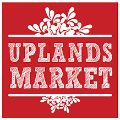
Uplands Market Limited

Riverside Farms Association

Maple Leafs, Incorporated
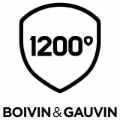
Boivin and Gauvin, Incorporated

Les Fermes Valens Limited

Stine Seed Corporation
